
Udon Thani’s food markets aren’t for the faint-hearted. Amidst the evening cacophony of live luk krung music, student chatter and cries of vendors, rows of stalls stand adorned with every imaginable cut of meat.
Slabs of moo grob, whole roasted ducks and links of sai krok Isaan dangle from steel hooks alongside hearts, tripe, intestines, tongue and tails from most imaginable animals. Trays are piled high with deep-fried cicadas, crickets, cockroaches, beetles, bamboo worms and ant egg salads, and women tout bamboo baskets brimming with vegetables, herbs and kaleidoscopic chillies.
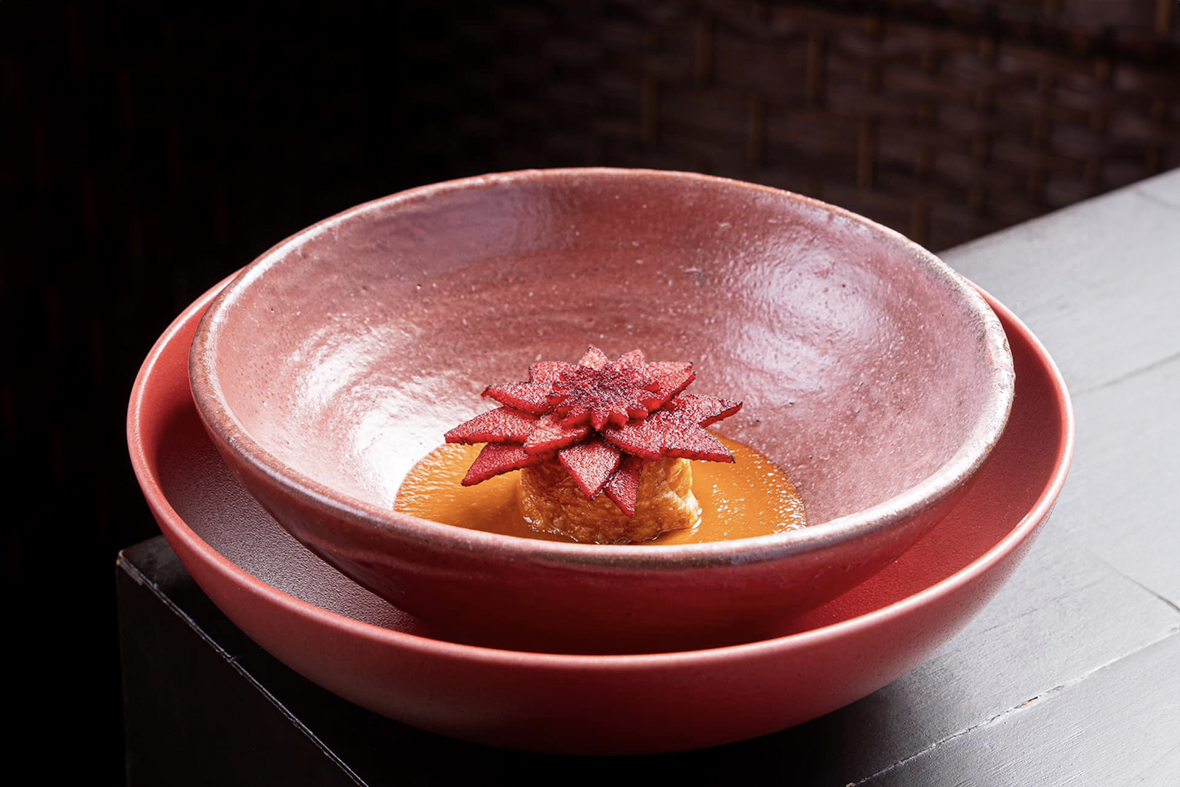

Just a short walk from the market, an altogether different culinary scene is unfolding — albeit with the same ingredients. Tucked away in an unassuming shophouse 10 minutes from the city centre, Chef Weerawat ‘Num’ Triyasenawat is finishing the evening’s dinner service. The seasonal tasting menu at his 35-seater restaurant Samuay & Sons is a bold celebration of Isaan’s rich produce and traditional dishes.
Traditional dishes may be an understatement. Num’s progressive fare goes beyond the typical fare in the country’s countless Isaan eateries. Since launching in 2014, Samuay & Sons — included on the World’s 50 Best Discovery list in 2021 — has been at the vanguard of a new wave of Isaan restaurants restoring the cuisine’s roots with an emphasis on authentic flavours and exceptional produce.
“We’re trying to represent and maximise the use of ingredients only available in Isaan for people to enjoy and educate them on what is all around,” Chef Num says. “We want to refine while still remembering our roots and reawaken people to the joys of Isaan cuisine.”
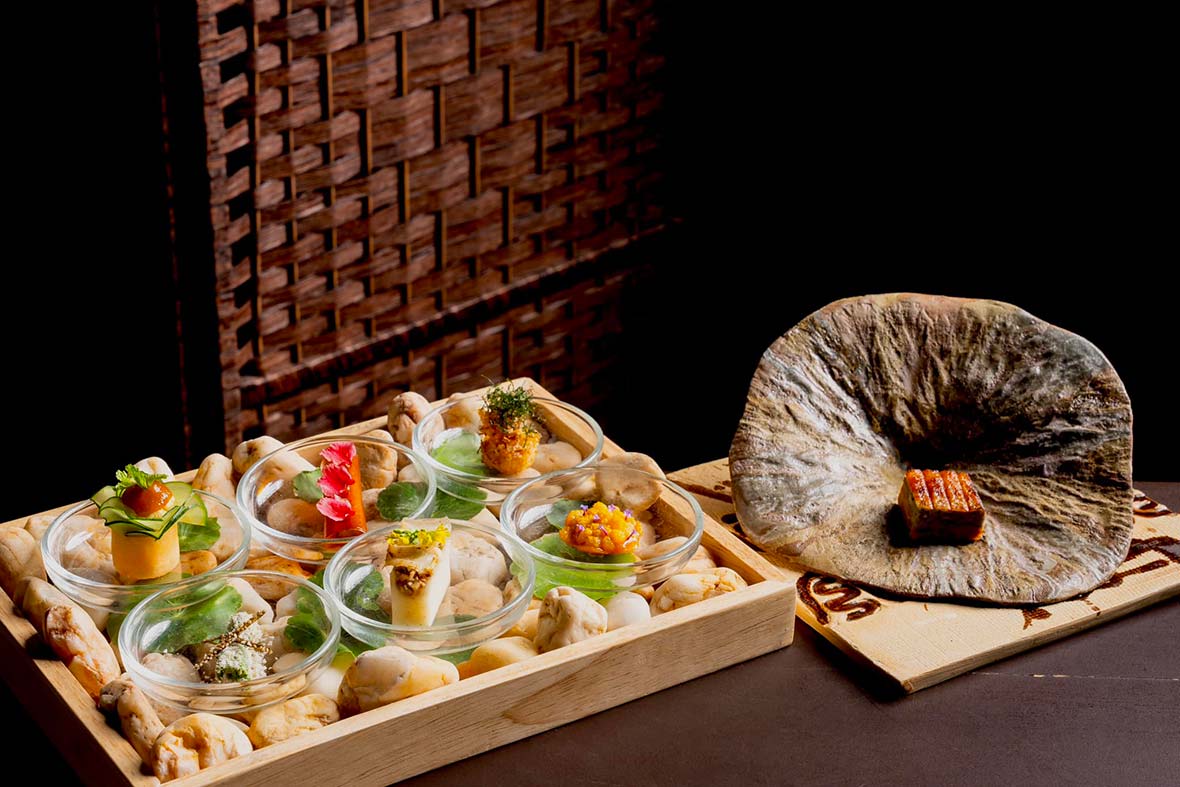
Isaan food has been a staple of Thailand’s rich culinary scene for decades. Ask anyone au fait with the country’s fare to name their favourite dishes, and they will mention gai yang, larb and somtam. Its widespread popularity is partly due to the mass economic migration from rural Isaan to more affluent areas of Thailand and further afield since the mid-20th century.
Famed for its robust, firecracker flavours that sing on the tongue, prodigious amounts of chilli, garlic, shallots, lime and pla ra, the salty, strong-scented fermented fish sauce — instead of (or in addition to) nam pla — bring the cuisine to life. Its roots are much closer to dishes found in neighbouring Laos than regions elsewhere in Thailand, thanks to their intersecting heritage.
Over the years, however, recipes have been adapted to cater to palates in Bangkok and beyond. Even in Isaan, many dishes are almost unrecognisable from Chef Num’s childhood.
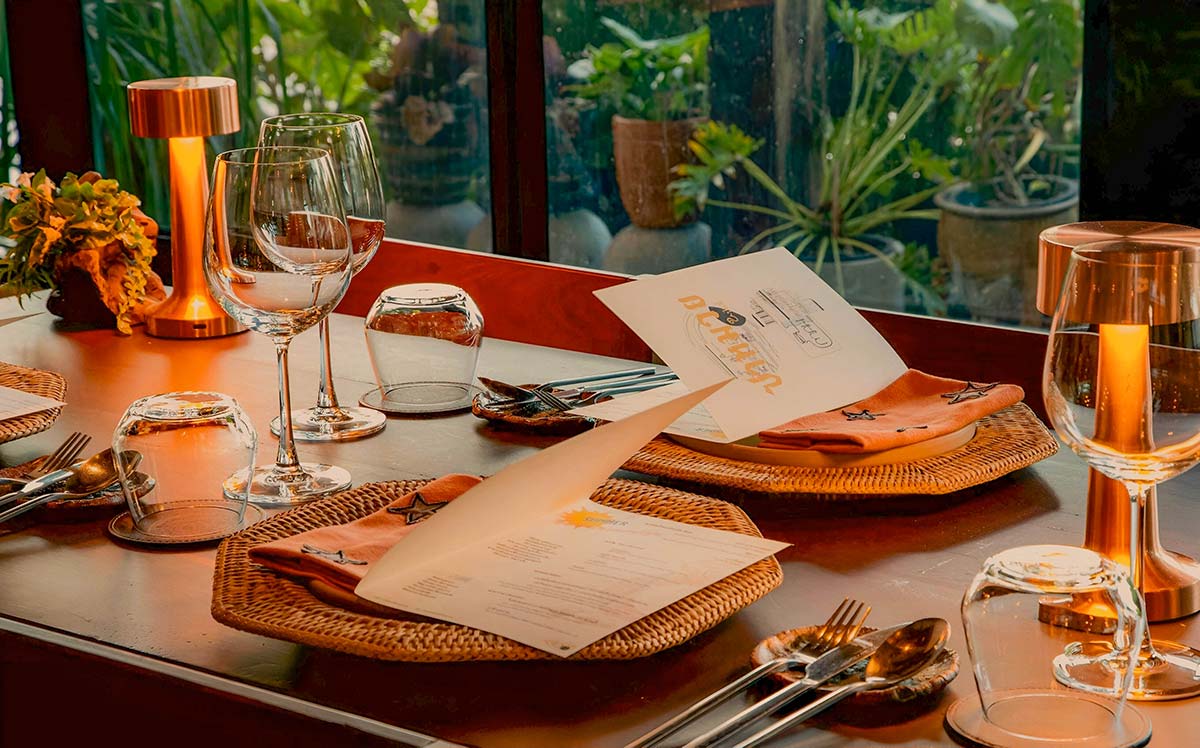


“Both consumers and the chefs cooking Isaan food have gotten used to a corrupted version of the cuisine,” he says. “This is maybe because recipes have not been handed down, or they lack patience, take shortcuts and cut costs such as replacing ingredients with MSG when they aren’t available locally.”
This adulteration of Isaan food slowly started to be reversed about a decade ago with the emergence of Somtum Der in Bangkok. Opened in 2011 by F&B whiz Thanaruek ‘Eh’ Loaraovirodge, the first restaurant in Sala Daeng launched with a mission to share “real local recipes in a differentiated ambience as they have never been served before.”
Eh and Chef Kornthanut ‘Korn’ Thongnum — both northeastern natives from Khon Kaen and Sakhon Nakon respectively — decided to specialise in authentic versions of the papaya salad, as well as other famous dishes. They challenged Bangkokians who had grown accustomed to watered-down Isaan food with sharp contrasts in flavours, and liberal use of Thai chilis, lime juice, palm sugar and Chef Korn’s homemade fermented fish sauce.
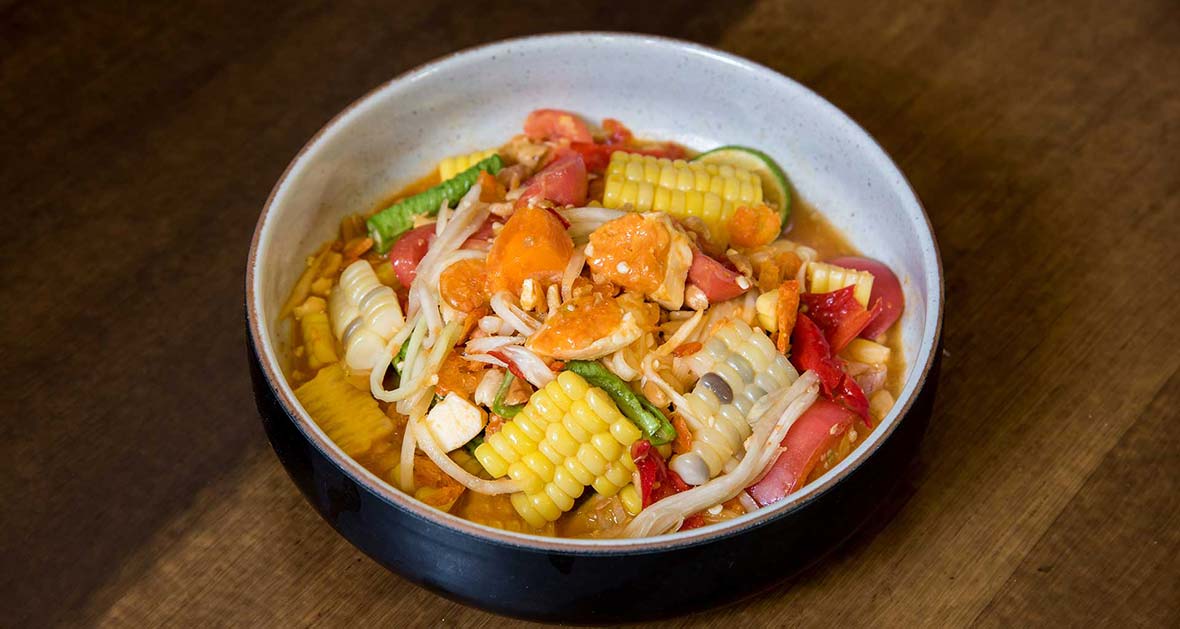

“I’m not a foodie, but I am an Isaan boy,” Eh says. “So when I graduated from New York, I returned to Thailand with a passion for promoting my culture. I started to think about what kind of brand I wanted to develop. I returned to my roots and my connection with the food. I wanted to make it so that people in Bangkok understood and learned about the authentic tastes.”
His cultural crusade has so far been a resounding success. Somtum Der has populated lists of Bangkok’s best restaurants and spawned outposts across the Thai capital as part of the ever-expanding Supanniga Group. It also paved the way for the emergence of many other independent eateries championing the northeast’s unique products and flavours.
Eh, Chef Korn and the Group’s most significant achievement to date is arguably the export of the restaurant brand overseas. Relying on the same principles and uncompromising ingredients, Eh opened Somtum Der in New York’s East Village in 2013. Three years later it became the first Isaan restaurant to receive a Michelin Star.


“When we started, we already knew that we wanted to present these traditional flavours in a contemporary setting in other countries,” Eh explains. “Besides, I already had connections in New York and knew it was ready.
“I’d never once found authentic Isaan food when I was living in New York. Of course, there were Thai restaurants, but it was the usual stuff like pad Thai and green curry. Still, New Yorkers are open-minded, metropolitan and adventurous. And it’s one of the world’s most exciting food scenes, so it made sense to start there.”
Back in Bangkok, Supanniga Group now counts an array of accessible eateries spanning local Thai cuisines. The formula is simple: pared-back establishments offering authentic food at affordable prices – albeit more expensive than their street-food counterparts.
Building on the success of trailblazing Somtum Der, a fresh wave of chefs and entrepreneurs is now taking the cuisine to new, high-end heights in the capital. With a keener eye for tasteful interiors and a refined atmosphere – without compromising on the food – restaurants like Zao near the chic Ekkamai district are once again redefining the image of Isaan food.
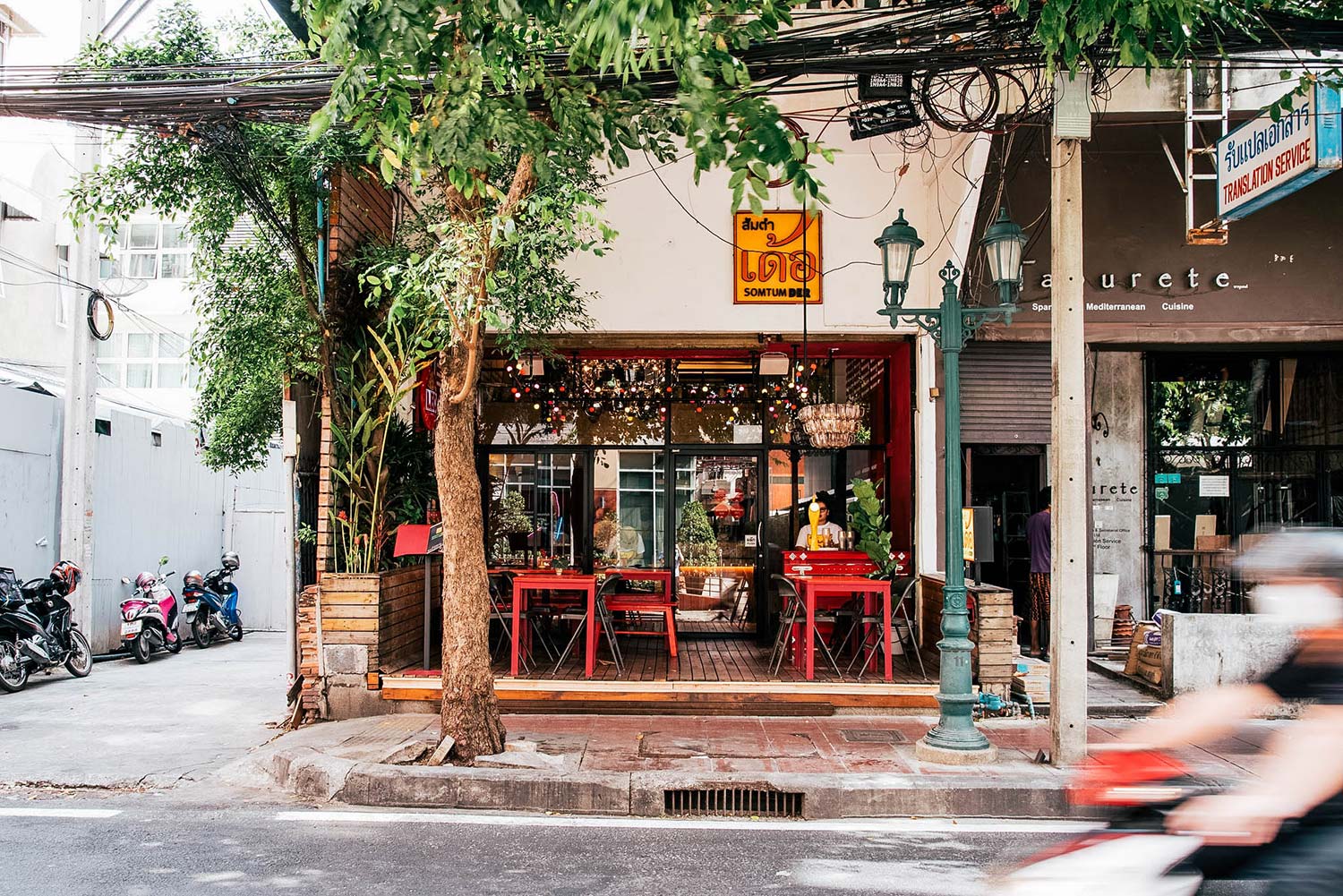
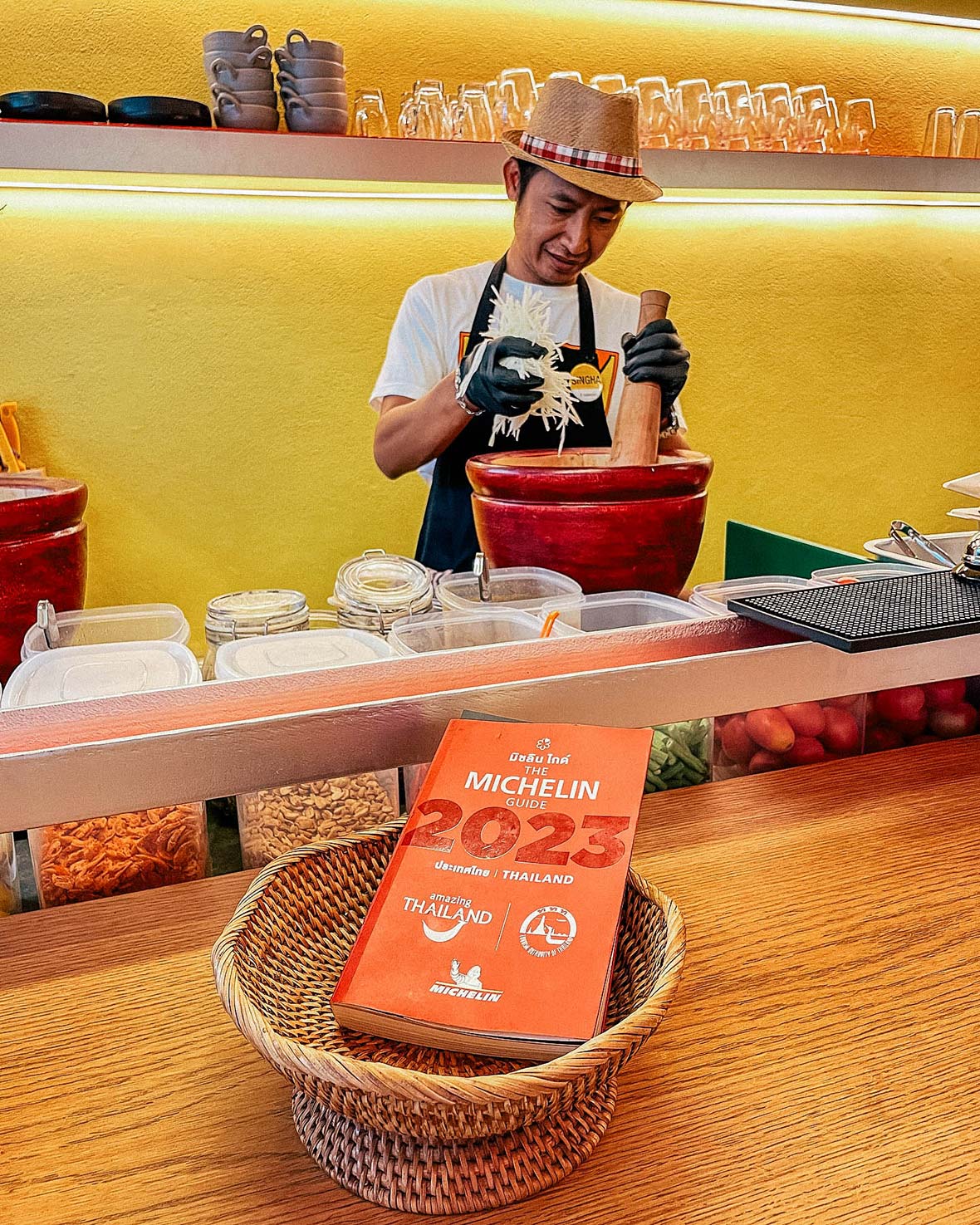
Former fashion designer Nutthida “Eve” Palasak initially opened Zao in Ubon Ratchathani to support local farmers and – much like Chef Num – bolster the region’s reputation as a hub for world-class food and produce. In the aftermath of the pandemic, Zao relocated to an art deco villa on Soi Pridi bursting with bold colours, bare concrete and floor-to-ceiling glass; hardly your average Isaan restaurant.
In a similar vein to Samuay & Sons and Somtum Der, the menu, too, eschews the obvious. Eve opts instead for seriously authentic dishes made using ingredients from the same market that supplies the Ubon branch. The set of three jaew (chilli paste) served with crispy pork skin and Isaan vegetables, and the deep-fried pla yon (local Isaan freshwater fish) are must-try dishes. But it’s the pla raa that steals the show. There are three variations – one of which is fermented for more than two years – that are the result of months of research and development.
Taking on preconceptions of Isaan food doesn’t, however, come with challenges. One, in particular, is the price point. “We have this great reputation amongst foodies and visitors from Bangkok, but local people find it harder to justify eating at our restaurant,” Samuay & Sons’ Chef Num explains.


“Our proteins and ingredients are supplied directly from the farm and we try and use the best artisanal products. It’s therefore hard to keep these prices cheap, so they end up being about the same as at an international restaurant. It’s a very strange concept for them to pay the same amount at an Isaan restaurant.”
Still, there seems to be a resurgent pride in the region — not just in the food, but the culture at large. For years, Isaan people have been largely looked down upon by the kingdom’s urban elites, with jokes and insults about their perceived backwardness commonplace. But even that is changing.
“People in the cities and central Thailand used to think of people in Isaan as subordinates, but I don’t think there’s as much discrimination now,” Eh says. “They see Isaan culture as offering value and actually as a source of income. There are so many talented people in the region and that is more evident with the crafts and local expertise. These artisanal trades are currently a source of pride for Thailand.”
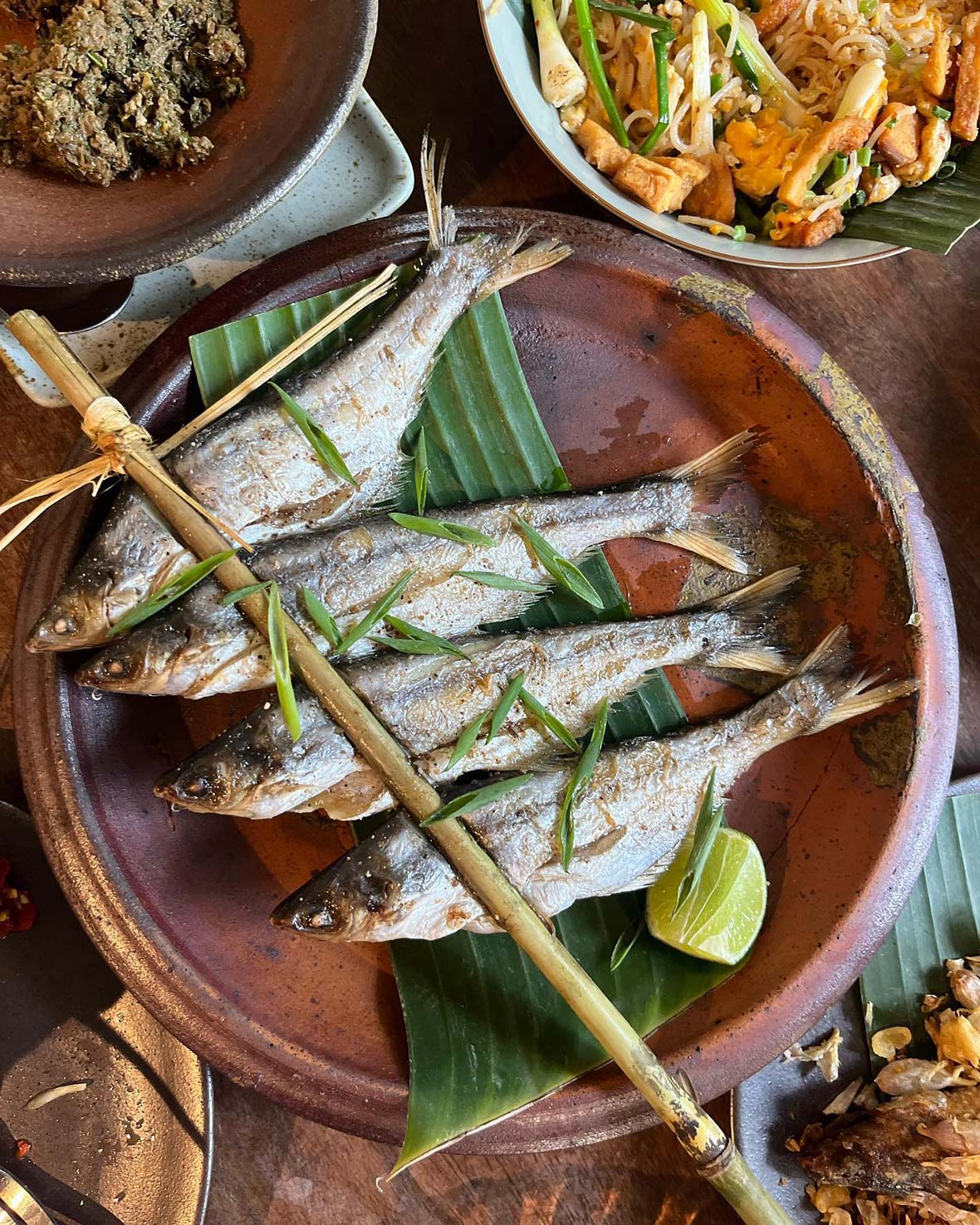

Another major boon for the region’s cultural scene was the introduction of the Michelin Guide in Isaan in 2023. The sixth edition features 69 new restaurants from the four cities of Thailand’s Northeast, including Samuay & Sons, led by Chef Num. He returned to Udon Thani more than a decade ago after working in some of San Francisco’s top restaurants. With the help of his brother Joe, he has cast the provincial capital onto the culinary map and is now hoping to do the same for the region’s local ingredients with his latest venture Mah Noi Food Lab. Established with chef Curtis Hetland, of the now-defunct Inua in Japan, the pair are shining the spotlight on the complexities of Isaan produce, methods and techniques.
“We’re living in a capitalist country. The structure we have now follows the US agricultural system of commercial farming and that’s diminished people’s appreciation for local produce and producers,” Chef Num says. “That’s why we do what we do – to emphasise Isaan’s rich bounty in a setting befitting the quality of the produce and skills of local artisans.”
“But at the end of the day, Isaan cuisine is not really about the food. It’s about the people.”
Indeed, with the likes of Chef Num, Eh and Eve reintroducing the region’s authentic flavours in sleek, fine-dining environments, the future of Isaan cuisine feels as potent as its spice quotient.
